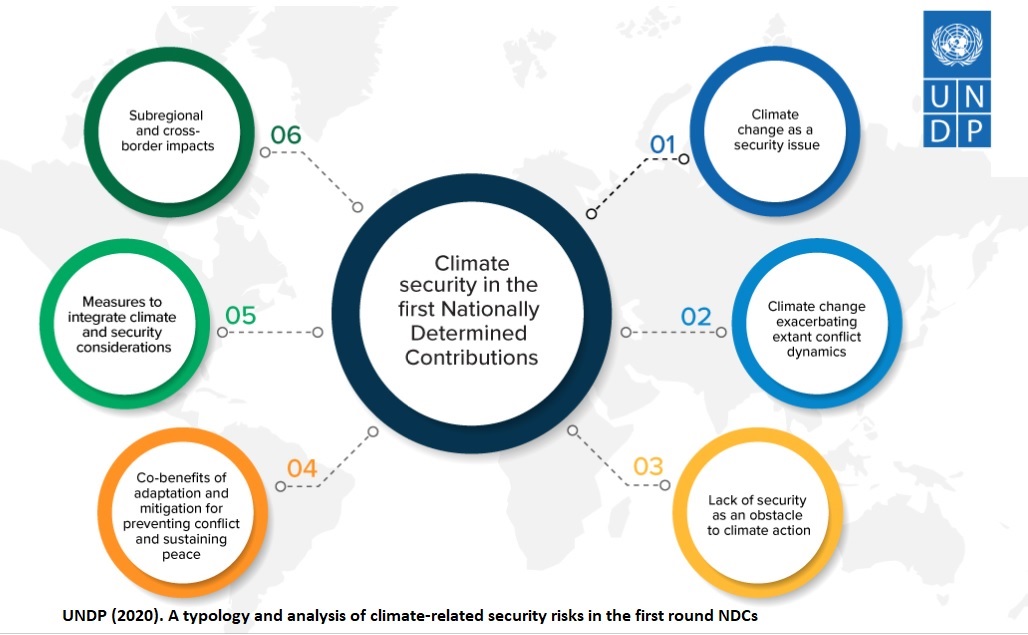UNDP’s study and typology of climate security risks described in first round Nationally Determined Contributions with contributions from UNFCCC can help inform the Climate Promise, offer a perspective on how Member States understand climate-related security risks and possible direction for climate security mainstreaming. This discussion serves to exchange on good practices on mainstreaming and glean insights for next steps and will examine mainstreaming in both directions: the challenges of mainstreaming climate change into security and peacebuilding efforts and ensuring that climate change policy and planning is peace positive. A Webinar will share the UNDP study as well as the outcomes of this e-discussion.
|


Welcome to the e-discussion on mainstreaming climate security into policies and practices. Your moderators this week, until 20 October, will be Francisca Aguayo and Matti Goldberg. We will facilitate your exchange, help structure the discussion, and, at the end of our "tenure", provide a summary of your contributions to serve as a snapshot of where we got, and to inform the exchange next week. There are two substantive starting points for the discussions: 1. UNDP's study and typology of climate security risks described in first NDCs, which will be available soon; 2. the four guiding questions listed above. We look forward to constructive, targeted, practical and creative views on ways to integrate climate security into policies and practices, and to ensure that climate policies are peace positive. Many thanks for joining! Francisca and Matti